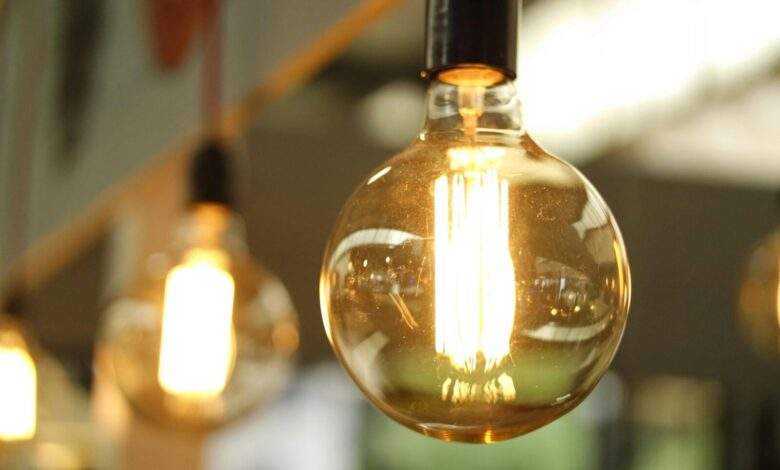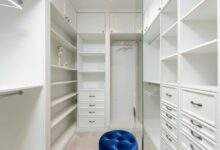Upgrade Your Home for Energy Efficiency: Simple Swaps for Big Savings

Table of Contents
In today’s world, where energy costs continue to rise and environmental concerns are at the forefront, upgrading your home for energy efficiency isn’t just a trend—it’s a smart investment. By making simple swaps and adopting energy-saving habits, homeowners can significantly reduce their utility bills while minimizing their carbon footprint. This comprehensive guide explores practical ways to enhance your home’s energy efficiency, from low-cost changes to long-term investments, ensuring both financial savings and environmental benefits.
Imagine receiving your monthly utility bill and being pleasantly surprised by a lower total than expected. For many homeowners, this scenario seems elusive, overshadowed by rising energy costs and inefficient home practices. Yet, with the right knowledge and actions, achieving a more energy-efficient home is within reach. From reducing phantom energy to upgrading appliances, each step contributes not only to financial savings but also to environmental conservation. Understanding why energy efficiency matters involves exploring its dual benefits: economic savings and ecological impact.
Why Energy Efficiency Matters
Energy efficiency isn’t just about cutting costs—it’s about making a positive impact on the environment. By consuming less energy, households reduce their carbon footprint, helping mitigate climate change. The financial benefits are equally compelling; energy-efficient upgrades can lead to substantial savings on monthly utility bills. According to the U.S. Department of Energy, implementing energy-efficient measures can reduce energy costs by up to 30%. Additionally, various government incentives and rebates make these upgrades more accessible and affordable for homeowners across the country.
Relevant Resources:
- U.S. Department of Energy: Energy Saver Guide
- Energy Star: Rebate Finder
- Environmental Protection Agency (EPA): Energy Efficiency
Benefits of Upgrading Your Home
Investing in energy efficiency goes beyond financial savings; it enhances overall comfort and well-being within your home. Energy-efficient upgrades such as improved insulation and smart thermostat installations create a more consistent indoor environment, minimizing temperature fluctuations and drafts. Improved air quality is another significant benefit, achieved through upgrades like using low-VOC paints and efficient ventilation systems. Moreover, energy-efficient homes often have higher resale values, appealing to environmentally-conscious buyers seeking long-term sustainability.
Relevant Resources:
- U.S. Department of Energy: Benefits of Energy Efficiency
- Energy Star: Indoor Air Quality
- National Association of Realtors: Home Value and Energy Efficiency
Simple Swaps for Big Savings
Making your home more energy-efficient doesn’t always require a hefty investment. Many impactful changes can be implemented with little to no cost, simply by adopting new habits and optimizing existing practices.
Low-Cost/No-Cost Changes
Developing healthy energy-saving habits can significantly reduce your home’s energy consumption without breaking the bank:
Unplug Unused Electronics
Phantom energy, or standby power, accounts for a substantial portion of household electricity usage. By unplugging electronics or using smart power strips, you can eliminate this unnecessary energy drain. For instance, a simple power strip can save up to $100 annually by cutting power to devices that are off but still drawing energy. Resources like Energy.gov provide detailed guidance on reducing phantom energy.
Relevant Resource:
- Energy Saver – Standby Power
Adjust Thermostat Settings
Optimize your thermostat settings to save on heating and cooling costs. Lowering your thermostat by just a few degrees in winter and raising it in summer can lead to noticeable savings. According to the U.S. Department of Energy, adjusting your thermostat 7-10 degrees for eight hours a day can save up to 10% annually on heating and cooling.
Relevant Resource:
- Energy Saver – Thermostats
Utilize Natural Light
Open curtains during daylight hours to maximize natural light and reduce the need for artificial lighting, especially during daytime hours. This simple habit can cut lighting costs significantly. Consider adding sheer curtains to allow light while maintaining privacy.
Relevant Resource:
- Energy Star – Natural Lighting Tips
Air Dry Clothes
Consider air drying clothes instead of using a dryer whenever possible. Not only does this save energy, but it also extends the lifespan of your clothing. Dryers are among the most energy-intensive appliances in the home, and skipping their use can save around $100 per year on electricity.
Relevant Resource:
- NRDC – Air Drying Clothes
Take Shorter Showers
Reducing shower time by just a minute or two can significantly cut down on water and energy usage, benefiting both your wallet and the environment. Installing a shower timer can help family members keep track of their water usage.
Relevant Resource:
- Energy Saver – Water Heating
Cook Strategically
Use lids on pots and pans to retain heat and cook more efficiently. Choosing the right-sized cookware for your stove burners ensures maximum energy efficiency. For example, using a pot that’s too small for a burner wastes energy as heat escapes around the sides.
Relevant Resource:
- Energy Star – Cooking Energy Tips
Conduct an Energy Audit
Perform a DIY energy audit to identify areas where energy is being wasted. Simple tasks like sealing air leaks and insulating pipes can make a big difference in energy savings. Websites like Energy.gov offer guides on performing your own home energy audit.
Relevant Resource:
- Energy Saver – Home Energy Audits
Upgrades with Mid-Range Investment
For homeowners willing to make a modest investment, these upgrades offer substantial long-term savings and comfort improvements:
Lighting
Replace Traditional Bulbs with LED Bulbs
LED bulbs are highly energy-efficient, using up to 80% less energy and lasting significantly longer than traditional incandescent bulbs. Switching to LED bulbs can save an average household about $225 in energy costs per year. Resources like the Energy Star website provide information on the benefits of LED lighting.
Relevant Resource:
- Energy Star – LED Bulbs
Install Smart Light Switches
Smart switches allow you to control lighting remotely and schedule on/off times, optimizing energy use based on your daily routines. This technology can also integrate with home automation systems for enhanced convenience.
Relevant Resource:
- Energy.gov – Smart Lighting
Power Strips
Use Power Strips for Electronics
Power strips with integrated surge protectors and energy-saving features prevent standby power consumption, reducing wasted energy. Using advanced power strips that automatically turn off devices when not in use can further increase savings.
Relevant Resource:
- Energy Saver – Power Strips
Water Conservation
Upgrade Showerheads and Faucets
Install low-flow showerheads and faucets to reduce water usage without sacrificing water pressure, saving both water and the energy used to heat it. WaterSense-labeled products are a good choice and can save a typical family 700 gallons of water per year.
Relevant Resource:
- WaterSense – Showerheads
Install a High-Efficiency Toilet
High-efficiency toilets use less water per flush compared to older models, resulting in significant water savings over time. The EPA estimates that replacing old, inefficient toilets with WaterSense-labeled models can save the average family 13,000 gallons of water and $110 per year.
Relevant Resource:
- WaterSense – Toilets
Insulation
Seal Air Leaks
Seal gaps around doors, windows, and ducts with weatherstripping and caulking to prevent conditioned air from escaping, reducing heating and cooling costs. The Department of Energy suggests that sealing leaks and adding insulation can save homeowners up to 20% on heating and cooling bills.
Relevant Resource:
- Energy Saver – Sealing Air Leaks
Consider Attic Insulation
Proper attic insulation helps maintain consistent indoor temperatures, reducing the workload on heating and cooling systems. Adding insulation to an attic can save homeowners 10-50% on heating and cooling costs, depending on the current level of insulation.
Relevant Resource:
- Energy Saver – Insulation
Upgrades for Long-Term Savings
For those looking to maximize energy efficiency and long-term savings, these investments provide significant returns:
Smart Thermostat
Benefits of a Smart Thermostat
Smart thermostats learn your household’s heating and cooling patterns and adjust temperatures accordingly, optimizing energy use and enhancing comfort. The Nest Learning Thermostat, for example, can save users 10-12% on heating and 15% on cooling costs annually.
Relevant Resource:
- Google Store – Nest Thermostat
Integration with Home Automation
Integrating a smart thermostat with home automation systems allows for remote monitoring and control, providing greater flexibility and energy savings. Platforms like Google Home and Amazon Alexa make it easy to control your thermostat with voice commands or via smartphone apps.
Relevant Resource:
- Energy Star – Smart Thermostats
Energy-Efficient Appliances
Replace Outdated Appliances
Upgrade to Energy Star certified appliances, which are designed to use less energy and water without compromising performance. Energy Star refrigerators, for instance, use about 15% less energy than non-certified models.
Relevant Resource:
- Energy Star – Certified Appliances
Energy-efficient appliances not only reduce utility bills but also offer durability and reliability, making them a cost-effective investment over their lifespan. The Energy Star program estimates that households can save about $575 on their energy bills annually by using Energy Star certified products.
Relevant Resource:
- Energy Star – Savings Calculator
Renewable Energy Sources (Optional)
For homeowners interested in sustainable living and further reducing their carbon footprint:
Solar Panels
Solar energy systems harness sunlight to generate electricity for your home, offering substantial long-term savings on energy bills. The cost of solar panels has dropped significantly over the past decade, making them a more accessible option. Additionally, the federal solar tax credit can reduce the cost of installation by 26%.
Relevant Resource:
- Energy.gov – Solar Power
Geothermal Systems
Geothermal heating and cooling systems utilize the earth’s natural temperature to regulate indoor climate, providing efficient and renewable energy solutions. Though the upfront cost is higher, the long-term energy savings and potential for tax incentives make geothermal systems an attractive option for many homeowners.
Relevant Resource:
- Energy.gov – Geothermal
Upgrading your home for energy efficiency isn’t just about saving money—it’s about creating a more sustainable future. By implementing simple swaps and investing in energy-efficient upgrades, homeowners can lower their utility bills, improve indoor comfort, and contribute to environmental conservation efforts. Whether through low-cost changes like adjusting thermostat settings or more significant investments in smart technology and renewable energy, every step towards energy efficiency brings us closer to a greener, more sustainable world. Start making a difference today by taking proactive steps towards a more energy-efficient home.
Relevant Resources:
- Energy Star – Energy Efficiency
- U.S. Department of Energy – Energy Saver
Frequently Asked Questions (FAQs)
Here are answers to some common questions about upgrading your home for energy efficiency:
1. What are the immediate benefits of upgrading my home for energy efficiency?
Upgrading your home for energy efficiency offers immediate benefits such as reduced utility bills. By implementing energy-saving measures, you can lower your monthly expenses while also improving the comfort and air quality within your home.
2. Are there government incentives available for energy-efficient upgrades?
Yes, there are various government incentives and rebates available for energy-efficient upgrades. These incentives can significantly reduce the upfront costs of upgrades like installing solar panels or upgrading to energy-efficient appliances. Check with local utility companies or visit Energy.gov for more information.
3. How much can I save by making energy-efficient changes to my home?
The savings from energy-efficient upgrades can vary depending on the upgrades implemented and your current energy usage. On average, homeowners can save up to 30% on their energy bills by adopting energy-efficient practices and technologies.
4. What are some low-cost changes I can make right now to improve energy efficiency?
You can start improving energy efficiency at home with simple changes such as using LED bulbs, sealing air leaks, and adjusting thermostat settings. These low-cost measures can have a significant impact on reducing energy consumption and saving money.
5. How do smart thermostats contribute to energy efficiency?
Smart thermostats optimize heating and cooling by learning your household’s patterns and adjusting temperatures accordingly. They can save energy by automatically adjusting settings based on whether you’re home or away, ultimately reducing heating and cooling costs.
6. What are the long-term benefits of investing in renewable energy sources like solar panels?
Investing in solar panels or other renewable energy sources can lead to long-term savings on energy bills as you generate your own electricity. Additionally, renewable energy systems contribute to reducing greenhouse gas emissions, promoting environmental sustainability.
7. How do energy-efficient appliances compare to standard models in terms of performance?
Energy-efficient appliances, labeled with Energy Star certification, offer comparable or even better performance than standard models while consuming less energy. They are designed to save energy without sacrificing performance, durability, or features.
8. Are there DIY home energy audits I can perform?
Yes, you can perform a DIY home energy audit to identify areas where your home may be losing energy. Simple tasks like inspecting insulation, checking for air leaks, and assessing appliance efficiency can help you pinpoint opportunities for energy savings.
9. What financing options are available for energy-efficient upgrades?
Several financing options are available to help homeowners finance energy-efficient upgrades. These include energy-efficient mortgages, personal loans, and financing programs offered by utility companies or state governments. Explore options that best suit your financial situation and upgrade needs.
10. How can I find qualified contractors for energy-efficient upgrades?
To find qualified contractors for energy-efficient upgrades, look for professionals certified by organizations like Energy Star or accredited by local utility programs. Ask for referrals from friends or neighbors who have completed similar upgrades, and always request multiple quotes to compare services and prices.








